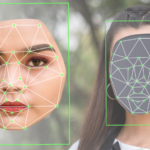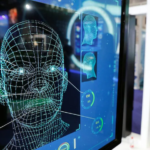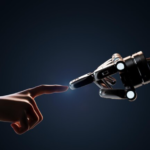In 2019 the Law Commission called for public submissions regarding the Use of DNA in Criminal Investigations. This is my public submission and impacts on Māori culture and Tikanga Māori.
Introduction
What is a Taonga
Why DNA is a Taonga
C.1 Tikanga
C.2 Traditional Knowledge
Data Sovereignty of DNA samples
Māori world view
Recommendations
References
A. Introduction
For the purposes of this submission, DNA is Māori genetic data which is held by Māori, extracted from a taonga species or ira tangata, contains or represents any Māori biological material that can trace whakapapa to Ranginui and Papatuanuku.
B. What is a Taonga
Before discussing why a genetic material is a taonga, recognised definitions of the term taonga need to be considered.
- The term taonga defies any exhaustive definition, and in summing up the findings of a number of Tribunal reports the Tribunal stated in the Petroleum Report of 2003 (The Petroleum Report (WAI 796, 2003) at [5.3].)
Though the term has a number of other more mundane meanings, successive carefully reasoned reports of the Tribunal over many years now have come to treat ‘taonga’, as used in the Treaty, as a tangible or intangible item or matter of special cultural significance. - The courts have also acknowledged that the status of taonga applies to the tangible and intangible, accepting both language and familial organisation as examples of intangible taonga. See in respect of language see New Zealand Māori Council v Attorney-General HC Wellington CP942/88, 3 May 1991; New Zealand Māori Council v Attorney-General [1987] 1 NZLR 641 (CA) and [1994] 1 NZLR 513 (PC); in respect of familial organisation see Barton-Prescott v Director-General of Social Welfare [1997] 3 NZLR 179 at 184.
- Lord Woolf of the Privy Council followed the approach of the Court of Appeal as well as the Tribunal in the final Broadcasting Assets decision stating:
The Maori language (Te Reo Maori) is in a state of serious decline. It is an official language of New Zealand, recognised as such by the Maori Language Act 1987. It is “a highly prized property or treasure (taonga) of Maori” (Cooke P [1992] 2 NZLR 576, at p 578 in the Court of Appeal) and it is also part of the national cultural heritage of New Zealand. New Zealand Māori Council v Attorney General [1994] 1 NZLR 513 (PC) at 513. - New Zealand courts have also discussed the notion that taonga may not necessarily be held by Māori, made by Māori or hold any Māori content or association. See Jacinta Ruru’s discussion of the cases of Page v Page (2002) 21 FRNZ 275 and Perry v West HC Auckland CIV-2002-404-002114, 15 December 2003 in Jacinta Ruru “Taonga and Family Chattels” [2004] NZLJ 297.
The definitions of a taonga used by the Waitangi Tribunal mean that any taonga is protected under the guarantees in article 2 of the Māori text of the Treaty of Waitangi which states:
The Queen of England agrees to protect the chiefs, the subtribes and all the people of New Zealand in the unqualified exercise of their chieftainship over their lands, villages and all their treasures. But on the other hand the Chiefs of the Confederation and all the Chiefs will sell land to the Queen at a price agreed to by the person owning it and by the person buying it (the latter being) appointed by the Queen as her purchase agent.
It is important to note here that some claims to the Waitangi tribunal regarding taonga have been unsuccessful and there is not yet a claim for data as a taonga.
C. Why DNA is a Taonga
Western scientific research proves that all species: fish plants, trees etc. all share large amounts of DNA with humans. Research also proves that humans come from a few common ancestors. Traditional Māori knowledge verifies this western scientific research. Traditional Knowledge states that all living things and natural objects have a direct whakapapa that goes back to Rangi and Papa via Io.
With some variations amongst various Iwi. Tane Mahuta and his descendants created the first human with assistance from Tangarao, birds, flora and fauna, insects and many other creatures. Tane Mahuta’s brother Tangaroa and his descendants created sea creatures. Therefore, all genetic data contains whakapapa of all tipuna and is a taonga.
Māori Data is a taonga and a highly valuable strategic asset to Māori (Taiuru, 2018). Mana Raraunga the Māori Data Sovereignty Network state that Māori Data should be subject to Māori governance, therefore Article 1 of the Treaty (Hudson, 2018). I argue that Genomic Māori data should be subject to Māori governance and tribal sovereignty that enables the realization of Iwi aspirations.
Governments and commercial entities consider genomics to be important. Internationally genomes have become a new commodity that is sold and traded on markets. Because of the western perspective that genomes are owned by the individual and can be traded and researched, genomes are treated as the new terra nullius not as a taonga that DNA is.
C.1 Tikanga
Genetic material, DNA and Genomes are biological whakapapa. DNA and Genomes have Mauri, Wairua and Whakapapa.
Whakapapa in its simplest sense is genealogy, in a wider sense whakapapa attempts to impose a relationship between an iwi and the natural world. Moreover, whakapapa is a metaphysical framework constructed to place oneself within the world (Tau, 2003). Whakapapa is one of the most prized forms of knowledge and great efforts are made to preserve it, P: 174 (Barlow, 1991).
Mauri: Traditional knowledge also tells us that every natural object and living thing has a spiritual aspect. If we sit down, our mauri sits down with us and some mauri can be left behind if not considered. Likewise, having our photograph taken contains the mauri of the persona. Hence, photos are the dead are tapu. Therefore, any DNA sample that is stored and manipulated will still contain the mauri of the person.
In te ao Māori, information is tapu and contains the tapu of the person it is about. Once you learn new knowledge it becomes a part of your mauri. Hence knowledge was not always provided and could not be provided. Because of this, knowledge has been taken by academics and governments without permission.
John Rangihau explains the process of gathering and learning new information:
I talk about mauri and some people talk about tapu. Perhaps the words are interchangeable. If you apply this life force to all things – inanimate and animate – and to concepts, and give each concept a life of its own, you can see how difficult it appears for older people to be willing and available to give out information. They believe it s a part of them, part of their own life force, and whey they depart they are able to pass this whole thing through and give it a continuing character. Just as they are proud of being able to trace their genealogy backwards, in the same way they can continue to send the mauri of certain things forward (King, 1978).
Some Māori will say genomes have no Mauri. If you consider a Māori world view and consider the statement from John Rangihau above. Then, because genome data originated from a person, or other living thing in the Māori world, the data does have a mauri.
Wairua
At its core, wairua refers to the spirit of a person as distinct from both the body and the mauri (Benton, Frame, Meredith, & Te Mātāhauariki, 2013). Wairua lives in and is a part of a DNA. Therefore, once DNA has been taken, that person or other species wairua has also been taken and is stored in a foreign system.
The integrating force of life is the wairua; wairua envelopes the heart, liver, lungs, kidneys, intestines, blood, muscles, ears, it is the cultivator, caretaker and integrator of all these things, so they stay in that place, within the part of the body… The wairua and its properties are also revered because they are he cause of man’s sancity; if the wairua did not disengage itself, man would not die; and if every part (of the body) that was cleansed of tapu was held onto by the wairua, life would not end ( Elsdon Best cited in Benton, Frame, Meredith, & Te Mātāhauariki, 2013).
The heavy influence of Christianity has seen the word Wairua adopted to be more more appeasing to Christianity. The term wairua was adopted in biblical translations to cover terms translated in English as ‘soul’ and ‘spirit’ (Benton, Frame, Meredith, & Te Mātāhauariki, 2013).
C.2 Traditional Knowledge
Traditional stories contain many warnings about genome editing and manipulation and the dangers if we are not careful. Tane Mahuta created a woman with the help of his brother ripping off part of his chest. But in the process of making the woman, he inadvertently created species of the forests. But he also created monsters and other evil species. Maui in an angry rage turned his brother into a dog. Tane Mahuta’s brothers, Peketua, Punaweko and Hurumanu created Tuatara, Land birds and Sea birds by fashioning clay into an egg. They then sought advice from Tane Mahuta who told them to endow the clay egg with life. Peketua produced the tuatara from the shell that he had fashioned from clay. Hurumanu created sea birds and Punaweko created land birds.
Tipuna Māori understood that body fluids were tapu. One of the most common forms of makutu is that in which a medium is used in order to connect the spells of the tohunga with the object to be acted upon by them. This medium, termed “ohonga” and “hohonga,” when main is the object, is usually a fragment of a persons clothing, a lock of hair, a portion of spittle, or a portion of earth on which he has left his footprint (Transactions and Proceedings of the Royal Society of New Zealand 1868-1961 Volume 34, 1901 pg 75). Tipuna Māori also considered knowledge to be tapu.
Tipuna Māori often gave ethnographers tapu information for paper medium created by metal plates. The distribution was severely restricted to those who could purchase a book. Informants had no idea of the Internet and information flow and speed of that flow. Genome Data today faces a similar fate. Virtual Reality and Artificial Intelligence are future risks that will affect Māori genome Data in ways that no one has yet realized the potential impacts to Māori and Iwi are limitless.
D. Data Sovereignty of DNA samples
Genetic material can be and is often converted into digital data and shared on the Internet and with other researchers and scientists. The extinct Huia and the Tuatara are examples of Taonga species that have been digitized and shared on the Internet. Human genomes are also digitized and shares in the same manner. This practice ignores that the data is a taonga and breaches Data Sovereignty rights.
When researchers and corporates analyse DNA for ancestry analysis, digitize Māori data and information without permission or consultation of the Iwi, they have breached traditional Māori customary rights and beliefs. It is too late to prevent the digitization and dissemination of taonga in the web and in digital repositories, but it is not too late to be considerate of customary rights/beliefs and to lessen any future impacts with DNA extraction for the purposes of criminal investigations.
If we consider the early colonisers and Christians to New Zealand who normalized the practice of collecting human body parts such as mokomokai (preserved heads). Society and government did not see anything wrong with this barbaric practice. Now, It is no longer socially acceptable. Only recently has repatriation of these human remains began. With the same knowledge learnt by history, we now must contemplate how many years will go by till Māori repatriate their genetic data from the Police and other entities?
E. Māori world view
All Māori are born with whakapapa but not all Māori are Māori practitioners. There is no one Māori world view, in as much as there is no one New Zealander world view. Māori are diverse as a people.
Māori societal structure is made up of descendants from the original waka that arrived in New Zealand. Then whānau who make up a larger hapū who are associated to the larger Iwi. Each whānau, hapū and Iwi have their own lore’s and values, though not so dissimilar as to be totally foreign to each other. StatsNZ recognise 137 Iwi. There is no records of how many hapū exist. Ngā Puhi according to Tūhono have about 278 hapū. Ngāi Tahu have 136 hāpu.
Hirini Mead, (Mead, 2016b) asserts that in 1979 it was obvious that few people really understood tikanga, and this included our own people. Tā Timoti Karetu also laments the loss of kawa on the marae in 1978 when he stated “it is more important to take a stand now and rescue what we can from those few kaumatua still living before the take their knowledge with them to the grave (King, 1978).
The loss of traditional knowledge, tikanga and kawa is likely due to the facts that Māori culture has been integrated into European culture for over 400 years by colonisation, intermarriage, introduced and forced religion, urbanisation, legislation and educationalists encouraging the move away from Māori culture and government imposed assimilation.
There has also been 400 years of heavy missionary influence introducing new religions that taught that Māori religious beliefs were bad. Many Māori adapted to these new religions, leaving behind their traditional knowledge systems and beliefs. Māori had many forced intermarriages into other different cultures through the colonization process. There were also customary intermarriages between hapū and Iwi.
In addition to the loss of knowledge, Māori academics have institutional boundaries they must work within. Western sciences and knowledge institutions do not recognise traditional knowledge, therefore how do Māori academics publish material about tikanga and mātauranga Māori? Cooper (2012) states that Māori knowledge has been cast by Western science into an epistemic wilderness, and Māori are regarded as producers of culture rather than knowledge.
The position of Kaupapa Māori is paradoxical. It must stand aloof from the concerns of science and center Māori epistemologies as a starting point for research. At the same time it must critically engage Western knowledge and production practices as part of its decolonizing and transformational strategy (Cooper, 2012)
F. Recommendations
The Criminal Investigations (Bodily Samples) Act 1995 is not:
- Fit for purpose
- Reflective of the Treaty of Waitangi
- Open to a Māori customary view or religious perspective
Therefore: it should be replaced with more comprehensive legislation that:
- Acknowledge that DNA is as a Taonga
- Recognise customary knowledge rights of DNA
- Ensures DNA is stored in a tikanga appropriate and safe manner
- Ensure DNA is obtained with customary rights considered (where possible)
- Recognises Treaty of Waitangi rights with all aspects of DNA retrieval and storage.
- Ensure there are adequate Māori representation on governance and all other decision making groups both locally and nationally at all levels of all organisations and government who deal with DNA samples for criminal investigations and privacy.
I make the following additional recommendations for the Law Commission to consider:
- The Commission’s preliminary view that that personal tapu, whakapapa, whanaungatanga and manaakitanga are particularly relevant to DNA; but the Commission ignores that wairua and mauri are also relevant to DNA. The customary beliefs of Wairua and Mauri must be considered.
- Because genetic data has a mauri, wairua and is whakapapa, DNA should be recognised as a taonga and as being tapu. The Waitangi Tribunal and the New Zealand government need to recognise DNA is a taonga in legislation.
- An extension to the oversight functions of the Privacy Commission in relation to the use of DNA in criminal investigations should be created, giving Māori a central role in oversight to advise on cultural ethics with DNA. Ideally a new specialist Commissioner or a Māori advisory group should be created.
- DNA data banks should culturally safe environments that consider the taonga and tapu nature of DNA. They need to also consider Data Sovereignty rights.
- Before a DNA sample is taken from tangata whenua/ira tangata, it should be explained by an appropriately trained person, to the suspect, of what will happen to their DNA sample and the impacts on their whanau and Iwi. This advise should be available in English and Māori.
- Resources about DNA should be made available in English and Māori. This will likely require work to create new Māori terminology which should use customary thinking.
- Voluntary Question forms should be in English and Maori.
- Māori should have an active role in all governance and decision-making roles, recognising Treaty principles of active protection, equity, rangatiratanga and partnership.
- The process of obtaining reference and databank samples should be made less physically intrusive and more compliant with tikanga Māori. Where intrusions upon tikanga Māori and privacy are necessary for law enforcement purposes to protect and safeguard citizens in a democratic society, that such intrusions are minimized. At no time, should a police officer be able to use reasonable force to obtain a sample. When possible, alternatives that are tikanga appropriate should be considered.
- . Police iwi liaison officers should be appointed to advise the impact of Māori cultural values and work with iwi and whānau regarding crime scene management, particularly where a homicide is involved involving Māori.
- The use of forensic DNA phenotyping to identify people by ethnicity via their DNA should be illegal as it will likely discriminate Māori.
- Police discretion to take a DNA sample should be removed and a clear guidelines should be implemented for taking a DNA sample.
- Police should not have any authority to sequence any gene. It is a violation of personal, whanau and Iwi tapu and personal privacy.
- Retention of profiles on case files and on the Crime Sample Databank and known person databank need to consider that is culturally inappropriate to leave profiles of DNA in the same system as dead people and to cross reference the living with the dead. Legislation should consider this.
- Forensic DNA phenotyping of suspects DNA is a huge risk to Māori as it will access whakapapa and other tapu information. Phenotyping should not be permitted. If it has to, then a general oversight body with NZBORA, privacy, Treaty of Waitangi, ethics and tikanga Māori capacity should be formed to be responsible for pre-approvals and to ensure proper processes are followed.
- Familial searching will likely discriminate Māori due to Māori being over represented in the system. Whanau, hapū and Iwi tapu and privacy should be considered as well as issues such as whangai and other personal circumstances that may not be public knowledge and not reported to the Police in the past. Ideally, like Canada, New Zealand should ban the practice.
- A tikanga expert should be appointed to manage all storage and requests of samples from the system. This will allow the customary tikanga aspects and Kaitiakitanga to be respected.
- Mass screenings violate Māori customary rights and Treaty obligations by ignoring that the DNA is a taonga, then mixing and matching the wairua of multiple samples to find a match. This has the potential to be another tool used for discrimination against Māori, especially those who live in highly populated Māori communities, traditional villages, near marae etc. Mass screenings should not be allowed.
- CIBS Act should be amended or included in a new Act, that prohibits Police obtaining a databank consent sample from a family member. The DNA is owned by the collective not the individual who is not a suspect in a crime.
- Profiles on the known person databank should be removed if it is determined the person is innocent. This goes some way to protect the tapu of the person whom the DNA was taken from and lessens the ability for discrimination.
- Suspects should be notified of what will happen to their samples and profiles and of possible future risks such as genome sequencing.
- At no point should any organisation or government department be permitted to research, sequence and or analyse Māori DNA due to being tapu.
- The role of Police “forensic services provider” should be recognised in statute and consideration for a Māori specific forensic services provider should be considered.
- Only the absolute minimum type and/or amount of information should be included in a DNA profile.
- Police officers should not be able to obtain suspect samples from young persons (aged 14 to 16) and prosecutable children (aged 10 to 13) without consultation with their parents or kaumatua and with a detailed explanation of what DNA is and the tikanga that surrounds DNA.
- Consent is best addressed in new legislation that recognises that DNA is a Taonga.
- I have many serious concerns about the Police using information that is publicly available on genealogical websites as an investigative resource. Vulnerable people without sufficient knowledge submit for DNA tests to public web sites. Giving the Police such powers would be create significant trust issues. Though the tapu of the DNA sample has already been compromised when it is on a public web site, these actions of the police are likely to create social and trust issues.
- People who have provided a sample should be able to choose to have their biological sample returned to them as opposed to it being destroyed.
- Procedures that surround the destruction of biological samples should be completed in a tikanga appropriate manner.
References
Barlow, C. (1991). Tikanga whakaaro: Key concepts in Maori culture. Auckland, N.Z: Oxford University Press.
Benton, R., Frame, A., Meredith, P., & Te Mātāhauariki, I. (2013). Te Mātāpunenga: a compendium of references to the concepts and institutions of Māori customary law. Wellington: Victoria University Press.
Cooper, G. (2012). Kaupapa Maori research: Epistemic wilderness as freedom? New Zealand Journal of Educational Studies, 47(2), 64-73.
Hudson, M. (2018). Social License: A Maori’s Perspective. In M. R. t. M. D. S. Network (Ed.).
King, M. (1978). Tihe mauri ora: aspects of Maoritanga. Wellington, New Zealand.
Mead, S. M. (2016). Tikanga Māori: living by Māori values (Revis ed.). Wellington: Huia Publishers.
Taiuru, K. (2018). Data is a Taonga. Retrieved from http://www.taiuru.maori.nz
Tau, T. M. (2003). Ngā pikitūroa o Ngāi Tahu: The oral traditions of Ngāi Tahu. Dunedin, N.Z: University of Otago Press.





Leave a Reply